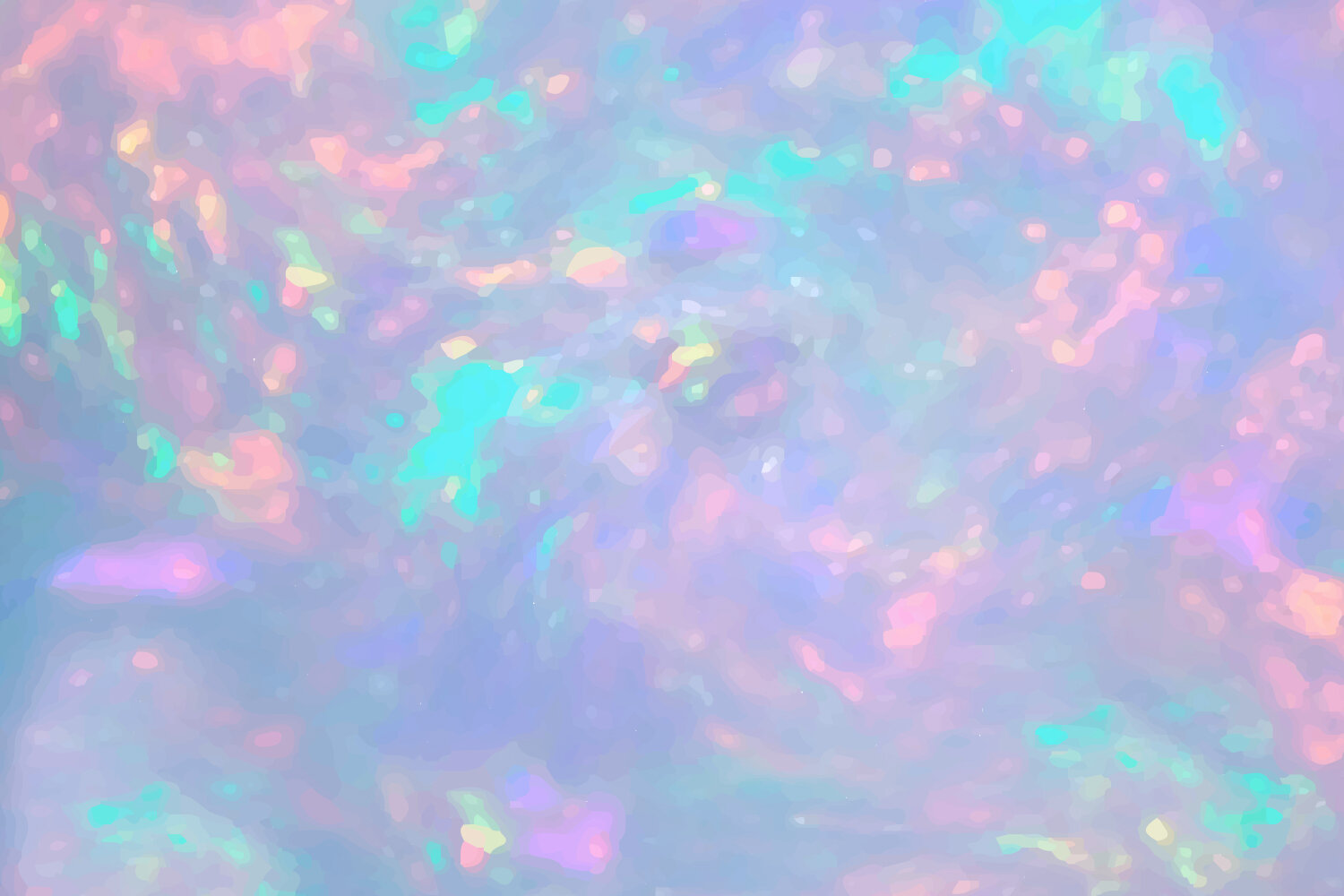
Pattern
Most opals have a pattern that fits into the flash fire or broad flashfire categories. Since there is very little difference in value for these patterns, the value is unaffected by pattern. The patterns which can significantly affect value are the unusual ones like harlequin. The pattern of an opal is usually not a major contributor to its value.
While many names are fanciful and unique, there are a set of commonly accepted names for fire patterns. These names are defined below:
| Opal | Description |
| Pinfire | The pinfire pattern has small pinpoint circles of fire. When viewed from the side, this pattern often looks like the side of a stack of pins. The top view looks like the pits of the pins, hence the name. The side view is called columnar fire. |
| Flashfire | The flashfire pattern has larger areas of fire that are usually irregular in shape. The splashes of fire can be fairly large, but not large enough to cover more than 50% of the surface of the opal.. |
| Broad Flashfire | The broad flashfire pattern features sheets of color usually covering a large section or all of the gemstone's surface. |
| Rolling Flashfire | The rolling flashfire patterns features sheets of color that roll across the surface of the gemstone as it is moved. This type of pattern is almost impossible to photograph but is highly prized. |
| Harlequin | The harlequin pattern depicts square or angular blocks of fire set closely together. True harlequins, are rare indeed. Rare and unusual patterns that are not regular are also especially valued, but not regarded as true harlequins. |

